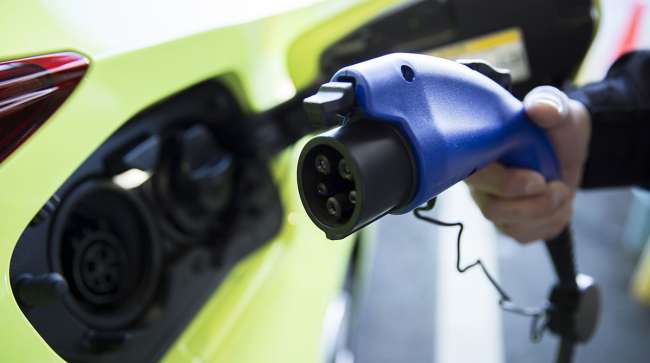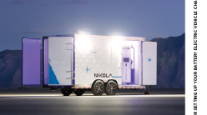Bloomberg News
US Zigs While Rest of the World Zags on EV Subsidies

[Stay on top of transportation news: Get TTNews in your inbox.]
Subsidies for electric vehicles are heading in very different directions in different parts of the world.
China, for example, has been phasing out direct-purchase support for EVs since 2018 and plans to fully end its subsidies next year. The U.K. also has steadily reduced EV subsidies, which are now down to £1,500 (about $2,000) for fully electric vehicles and have been eliminated for plug-in hybrids. Austria just announced plans to fully end subsidies for passenger EVs this year to shift support toward heavier vehicles.
The U.S. could end up being an outlier. President Joe Biden’s Build Back Better plan included a big boost for EV subsidies in the form of expanding the federal income tax credit available to consumers. Under the plan, the cap on the number of vehicles an automaker can sell that are eligible for the $7,500 tax credit would have been eliminated. It also included a perk for vehicles made with union labor and a further bonus for EVs that use U.S.-made batteries. The maximum tax credit available to an EV buyer under the plan would have been $12,500, among the highest in the world.
Build Back Better was sent back to the drawing board, but some form of a revised EV tax credit in the U.S. looks likely. At BNEF, we’re expecting an updated tax credit to pass that includes eligibility for the automakers that already had hit the 200,000-vehicle cap, namely General Motors and Tesla. Buyers of their vehicles no longer qualify for the tax credit. The list soon will include Toyota, followed by Nissan, Ford and others, as the U.S. EV market continues to accelerate. An updated tax credit also likely will be provided to consumers at the point of purchase, rather than at the end of the year.
There is no perfect time or way to end a support program like this. If there’s a fixed amount of money available or a set end date, you invariably get surges and cliffs in demand as buyers pull forward purchase decisions to get their transaction in under the wire. China’s EV sales have been notoriously cyclical over the last five years, with sales surging in December and then falling like a stone in January, partially due to changes in subsidies. That makes planning difficult for automakers, and also provides fodder for critics to disingenuously claim the declines prove there’s no real interest in the technology.
The U.S. has managed to avoid some of these peaks and valleys because its tax credits have effectively phased out for different automakers at different times. Tesla hit the cap in 2018, followed by GM months later, and BNEF expects Toyota to hit it next month. But the market can get distorted in other ways. Residual values of EVs in the U.S. have generally been poor, with the exception of Tesla’s vehicles. Some of that is just because the technology is improving so quickly. But high federal tax credits also can play a role because buyers are comparing used vehicle prices with those of new ones minus the tax credit. To get the industry to really take off, a thriving used EV market is eventually needed, and that gets tricky if residual values are still not very good.
Want more news? Listen to today's daily briefing above or go here for more info
The main goal for policymakers who want this sort of support is to get EVs to the point of take-off, where adoption starts to accelerate on its own. Based on a review of different EV markets, BNEF estimates that the inflection point on adoption generally hits around 8% to 10% of sales. For example, it took a decade of supportive policy in China for EVs to hit 8% of sales in the fourth quarter of 2020. Then, only a year after that, the share of sales more than doubled to almost 20%. The trajectory in many European countries has been similar, although there are many local factors at play.
The U.S. isn’t quite there yet, but the plug-in share of total vehicle sales hit 6.8% in the fourth quarter of last year and should comfortably exceed that level this year. Once the take-off point has been crossed, it makes sense to assess whether some of the money would be better spent on other areas like public chargers, support for used vehicles, or heavy vehicles, as Austria is doing.
Charging infrastructure looks like a good area to focus on. Biden’s $7.5 billion plan for charging infrastructure is similar to the cost of just one year of the federal income tax credit, if all automakers were eligible. Many countries could effectively blanket their territories with charging infrastructure for the cost of two to three years of direct vehicle-purchase support.



